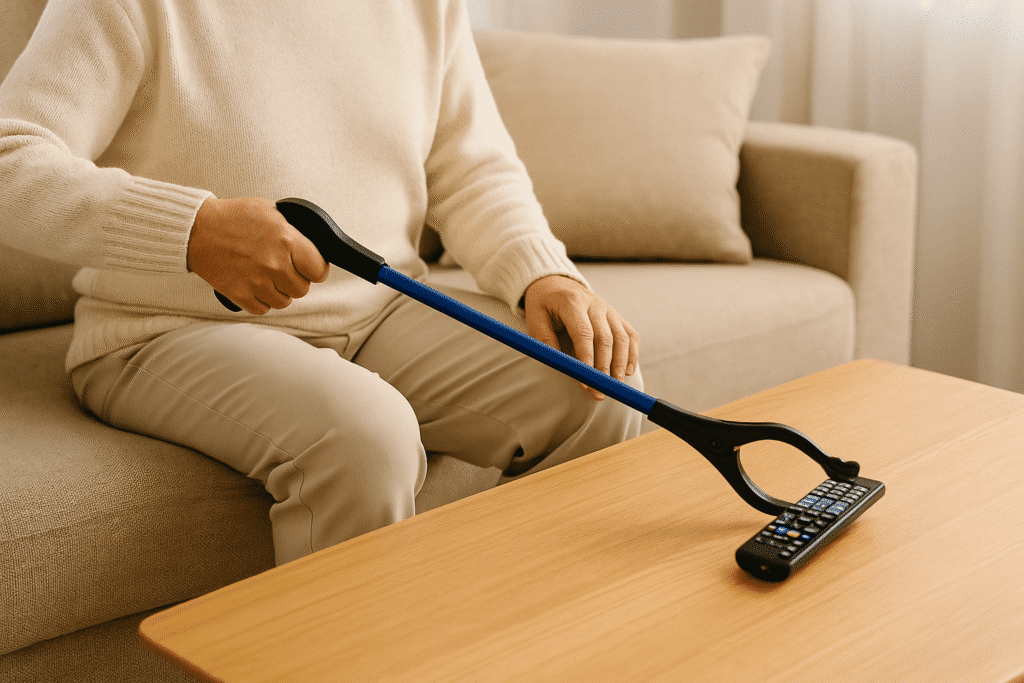Many older adults wonder if a lift chair is worth the investment. The short answer is yes. Lift chairs can be a valuable tool for seniors because they improve safety, independence, and comfort.
For people with arthritis, mobility issues, or recovering from surgery, a lift chair makes sitting down and standing up far easier and safer.
Key Summary:
Lift chairs are worth it for many seniors because they improve safety, independence, and comfort in daily life. They make sitting and standing easier, reduce fall risk, and ease joint strain for people with arthritis or mobility challenges. While cost and space are important factors, the right lift chair can support aging in place, relieve caregiver strain, and provide long-lasting comfort.
What Is a Lift Chair?
A lift chair is a special type of recliner that uses a motorized lifting mechanism to help a person move smoothly from sitting to standing. Unlike a standard recliner, it gently tilts and raises the seat at the push of a button, reducing strain on the hips, knees, and back.
Beyond the lift feature, most lift chairs also work as full recliners, offering adjustable leg rests, backrests, and sometimes even extras like heat or massage.
They look similar to regular living room furniture but are designed with medical-grade support and durability to meet the needs of older adults who spend long periods sitting.
Who Benefits Most from Lift Chairs?
Lift chairs are especially helpful for seniors who struggle with mobility or balance. They provide daily support and peace of mind in situations where sitting and standing can feel risky.
- Older adults with arthritis or chronic joint pain: Reduces pressure on stiff or painful joints.
- People recovering from surgery: Ideal for recovery from hip, knee, or back surgery, where movement is limited.
- Seniors with balance problems or fall risk: Helps prevent accidents when rising from low seating.
- Individuals with back pain: Reduces strain and makes movements smoother.
- Caregivers and family members: Less need for physically lifting or steadying loved ones.
Benefits of Lift Chairs for Seniors
Lift chairs offer much more than just comfort. For many seniors, they provide safety, confidence, and independence in daily life.
Improved Independence
Lift chairs allow seniors to sit and stand without relying on constant help from others.
This independence is especially important since 90% of older adults say they want to age in place at home. A lift chair makes this more practical by reducing dependence on caregivers for simple movements.
Increased Safety
Falls are the leading cause of injury in adults over 65, with 1 in 4 seniors experiencing a fall each year.
A lift chair lowers this risk by offering a stable, controlled way to transition between sitting and standing. Instead of pushing off from a low seat or relying on shaky balance, the chair does the heavy lifting.
Comfort and Pressure Relief
Like a recliner, a lift chair supports relaxation. Seniors who spend long hours sitting benefit from multiple recline positions, which can improve circulation, reduce swelling in the legs, and ease back or hip pain.
Some models add features such as heat and massage, which help relieve stiffness and promote blood flow.
Reduced Caregiver Strain
For caregivers, one of the hardest tasks is helping a loved one stand or sit safely.
Lift chairs reduce the need for this physical support, which not only lowers injury risk for caregivers but also makes daily routines smoother and less stressful for both parties.
Considerations Before Buying a Lift Chair
A lift chair can be life-changing for many seniors, but it is not a one-size-fits-all solution. The main considerations include cost, space, fit, and the fact that it’s a comfort and safety tool, not a replacement for mobility aids.
When deciding if a lift chair is worth it, it helps to weigh the benefits against these practical factors:
Cost
Lift chairs are more expensive than standard recliners. Prices typically range from $300 to over $2,000, depending on the brand, size, and features.
Medicare in the U.S. may cover part of the lifting mechanism (but not the full chair), and some health insurance or tax deductions may apply if prescribed as medical equipment.
Before buying, it’s smart to compare warranties, financing options, and whether refurbished models are available to save money.
Space Requirements
Lift chairs need more room than a standard armchair. Many models require at least 12–18 inches of wall clearance for full recline, plus extra floor space for the lifting mechanism to operate. In smaller living rooms or apartments, this can feel bulky.
Measuring your space before buying is essential, and some companies now make wall-hugger or slim models designed for tighter spaces.
Not a Complete Mobility Solution
While a lift chair makes sitting and standing safer, it does not replace a walker, a cane, or grab bars. Seniors with balance issues, frequent falls, or limited walking ability will still need other mobility aids.
Think of it as part of a larger home safety plan, alongside lighting improvements, non-slip flooring, and bathroom grab bars.
Personal Fit & Features
Comfort and fit matter just as much as the lifting function. The chair should match the user’s height, weight, and body type; a poor fit can cause new aches or make standing harder.
Features like dual motors (separate back and leg control), heat and massage, fabric durability, and battery backup are also worth considering.
Since most seniors spend hours daily in their chair, investing in the right design pays off in long-term comfort and usability.
How to Choose the Right Lift Chair
The best lift chair is one that matches both the senior’s physical needs and their living space. Before buying, consider these points:
- Measure your space carefully: Check wall clearance and room layout before selecting a model.
- Match the chair to your body size: Seat depth, width, and height should fit comfortably.
- Decide on motor type: Single-motor chairs are simpler, while dual-motor chairs allow more personalized positions.
- Check weight capacity: Most standard chairs hold 300–375 lbs, but bariatric models support more.
- Think about extra features: Heat, massage, USB ports, and fabric choices can make daily use more enjoyable.
- Look at warranty and service: Medical-grade chairs often include multi-year coverage, which adds peace of mind.
- Test before you buy if possible: Visiting a showroom or trying a demo chair ensures the fit feels right.
Are Lift Chairs Covered by Insurance or Medicare?
Yes, Medicare Part B may help cover the lifting mechanism of a lift chair if your doctor prescribes it as medically necessary, but it does not cover the full cost of the chair itself.
Some private insurance plans may offer similar partial coverage, and in certain cases, lift chairs can also qualify for tax deductions as durable medical equipment.
In practice, this means most seniors will still pay out of pocket for the chair’s main cost, while Medicare or insurance may only reduce the expense slightly.
It’s always best to confirm with your provider and ask about specific requirements, such as a doctor’s prescription, weight capacity needs, or approved suppliers, before making a purchase.
Final Words
Lift chairs are more than just comfortable recliners. For many seniors, they provide safety, independence, and peace of mind, helping reduce fall risks, ease joint pain, and make daily life easier.
While cost and space are important considerations, the benefits often outweigh the drawbacks, especially for those with mobility challenges or recovering from surgery.
If you or a loved one struggles with standing or sitting safely, a lift chair can be a smart investment in both comfort and long-term well-being.
FAQs
How much does a lift chair cost on average?
Most lift chairs range between $300 and $2,000, depending on size, features, and brand. Basic models are more affordable, while dual-motor or feature-rich chairs cost more.
Does Medicare cover lift chairs?
Medicare Part B may cover the motorized lifting mechanism, but not the entire chair. A doctor’s prescription and an approved supplier are usually required.
What is the difference between a lift chair and a recliner?
A lift chair includes a powered mechanism that raises and tilts the seat forward to assist with standing. A standard recliner only leans back for comfort and does not provide lift support.
How long do lift chairs usually last?
With daily use, a quality lift chair typically lasts 7 to 10 years. Longevity depends on build quality, weight capacity, and how well the chair is maintained.
Can lift chairs help prevent falls?
Yes, lift chairs lower the risk of falls by making it easier to transition from sitting to standing. They provide a safe, steady movement instead of relying on balance or muscle strength alone.
Are there lightweight or space-saving models available?
Yes, some manufacturers make wall-hugger or compact lift chairs that require less clearance and fit better in small rooms. These models are designed to save space without sacrificing comfort.
Lauren brings 8+ years of writing experience focused on accessibility, home organization, and senior living. Her practical guides are shaped by conversations with seniors and caregivers, helping readers simplify daily tasks with clarity and confidence.









